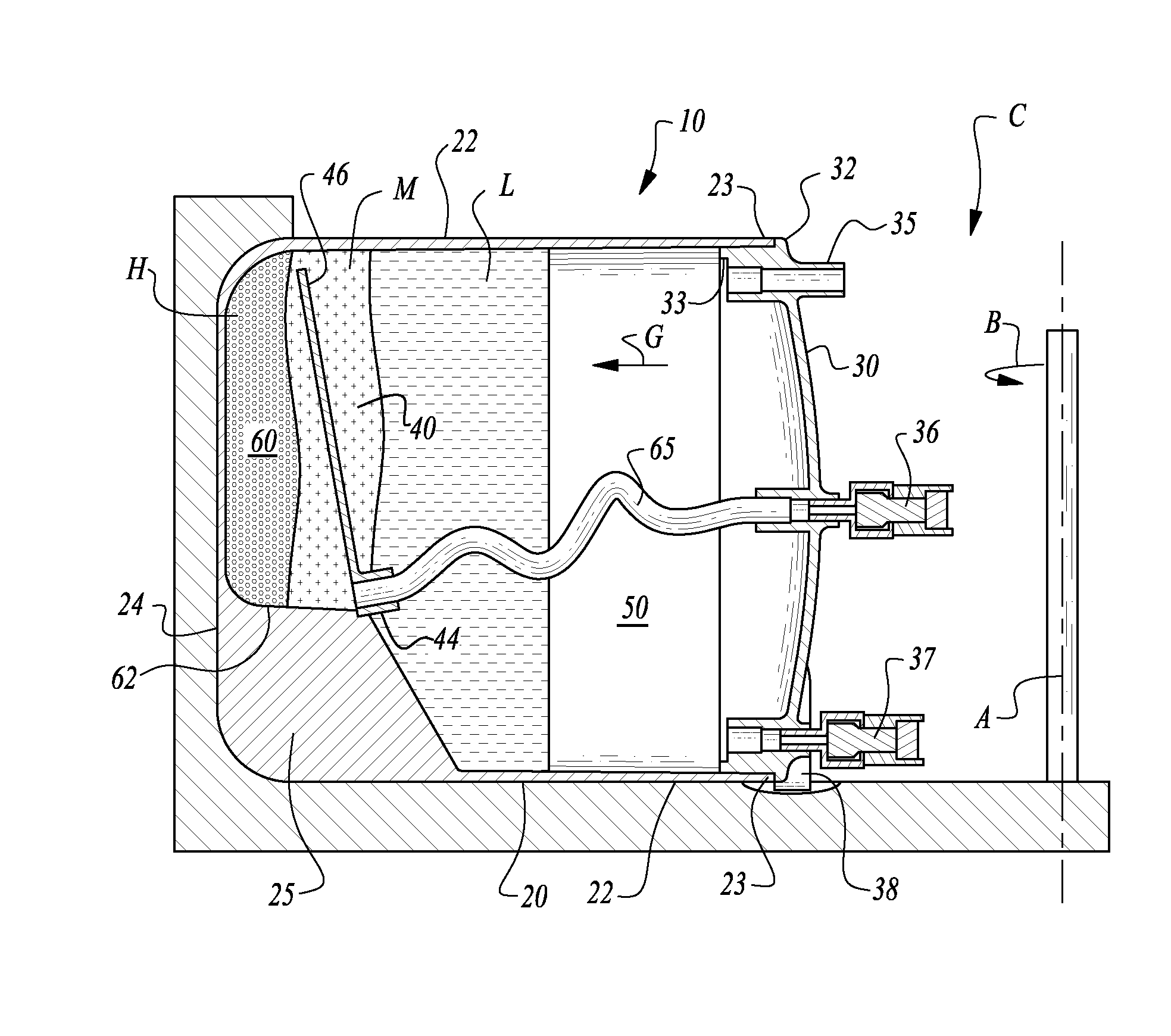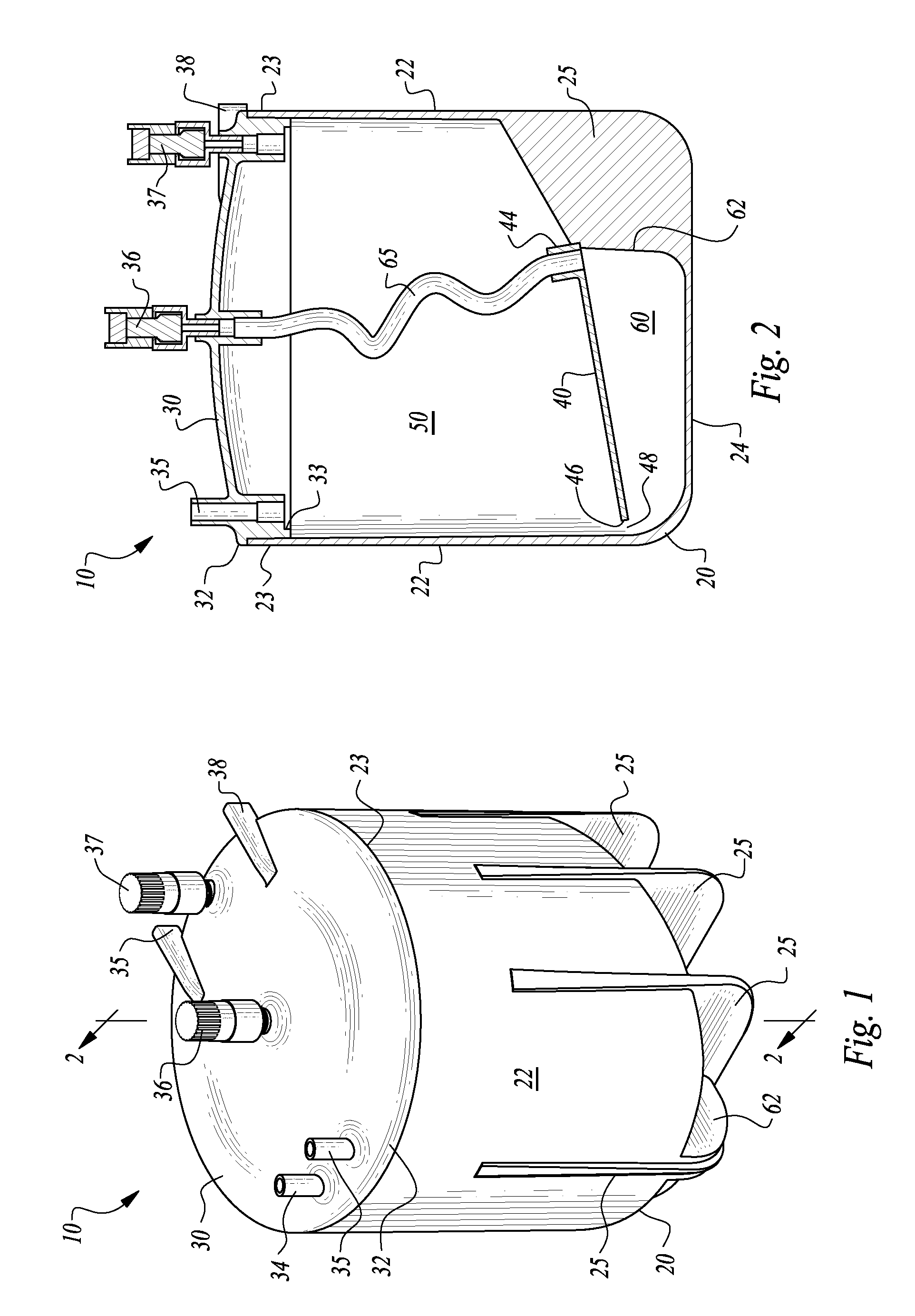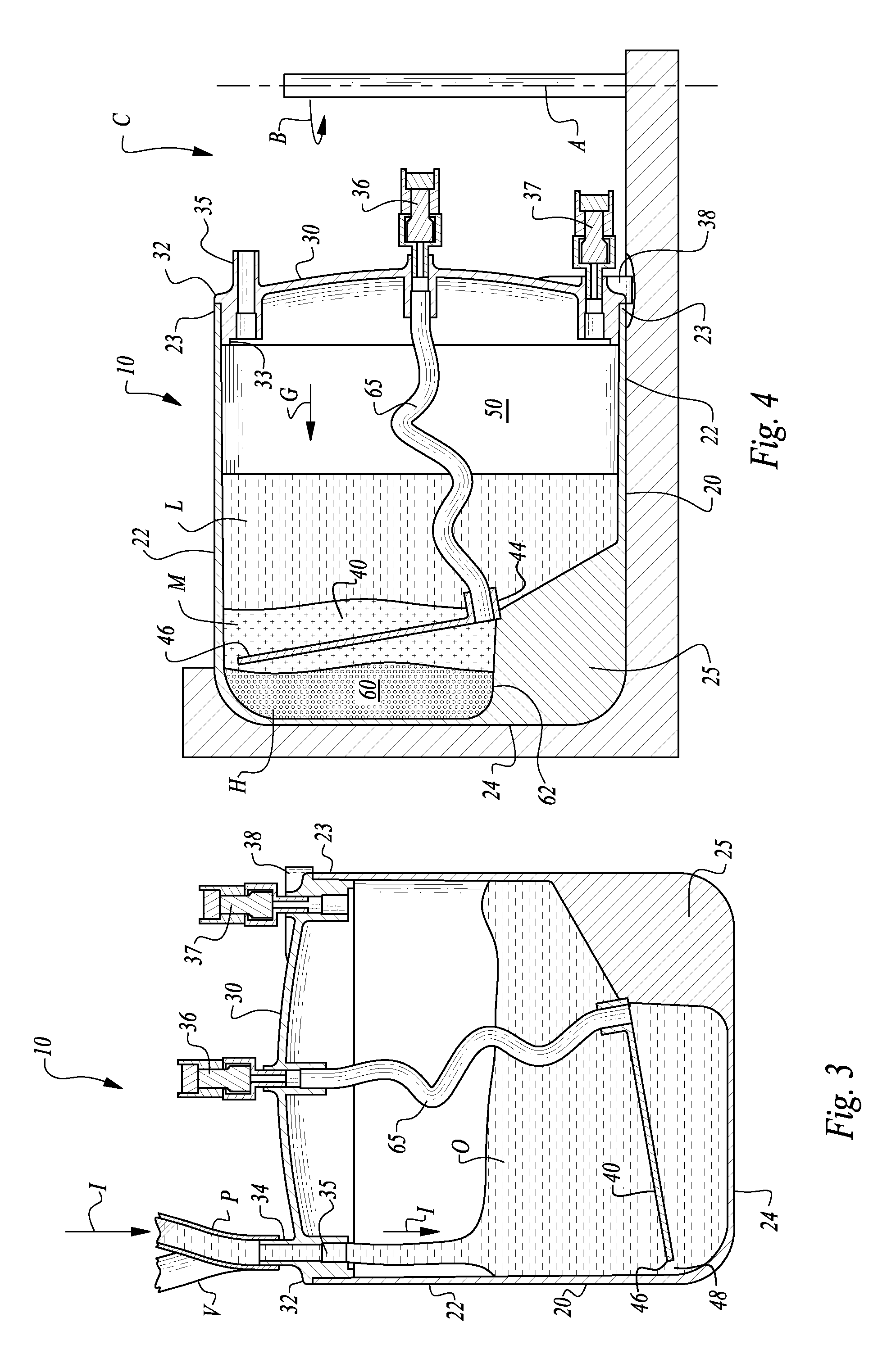Apparatus for centrifugation and methods therefore
a centrifugation apparatus and centrifugation chamber technology, applied in centrifuges, separation processes, instruments, etc., can solve the problems of insufficient amount of blood collected in reservoirs for separation and wash procedures, insufficient viscosity of tissue samples, and insufficient amount of blood collected in reservoirs, so as to reduce the amount of medical waste and related costs, the effect of compromising the safety of samples
- Summary
- Abstract
- Description
- Claims
- Application Information
AI Technical Summary
Benefits of technology
Problems solved by technology
Method used
Image
Examples
Embodiment Construction
[0072]Referring to the drawings, wherein like reference numerals represent like parts throughout the various drawing figures, reference numeral 10 is directed to a centrifuge vessel, defining at least a portion of an apparatus according to one embodiment of this invention. The vessel 10 can be used to separate an original mixed density sample O into separate constituents having differing densities. The vessel 10 also is conveniently configured to keep the distinct constituents separate after centrifugation and to provide for convenient removal of separate constituents after centrifugation.
[0073]Any multi-constituent fluid sample having constituents of differing densities can be separated within the centrifugation vessel 10, with a specific example provided herein involving the separation of a biological fluid (e.g. lipoaspirate) into a high density phase (such as a cell pellet) from a low density phase (such as adipose tissue and / or other oils) and potentially also a medium density ...
PUM
| Property | Measurement | Unit |
|---|---|---|
| volume | aaaaa | aaaaa |
| volume | aaaaa | aaaaa |
| density | aaaaa | aaaaa |
Abstract
Description
Claims
Application Information
 Login to View More
Login to View More - R&D
- Intellectual Property
- Life Sciences
- Materials
- Tech Scout
- Unparalleled Data Quality
- Higher Quality Content
- 60% Fewer Hallucinations
Browse by: Latest US Patents, China's latest patents, Technical Efficacy Thesaurus, Application Domain, Technology Topic, Popular Technical Reports.
© 2025 PatSnap. All rights reserved.Legal|Privacy policy|Modern Slavery Act Transparency Statement|Sitemap|About US| Contact US: help@patsnap.com



